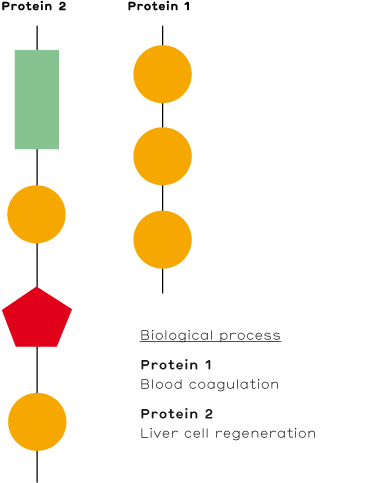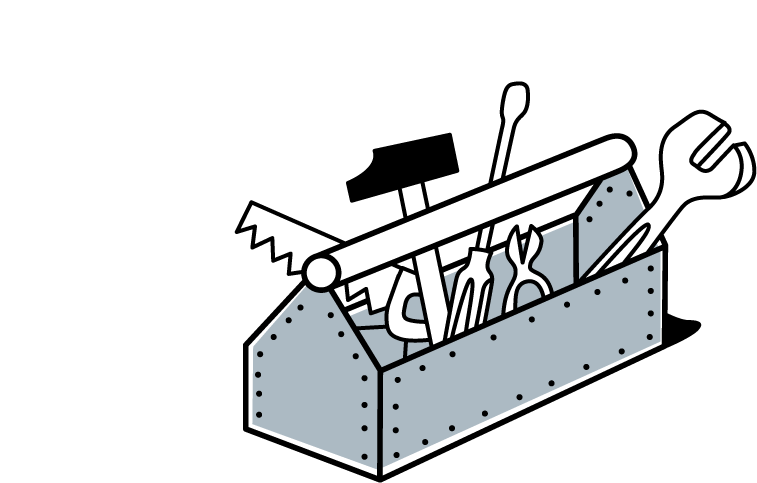List of chromosomes » Chromosome 21
Proteins: our body’s workers
Dissecting proteins
If scientists were able to dissect a protein, they would find a certain number of well-defined domains. Just like a tool box, in which you find a hammer, a pair of pliers and a screw-driver, a protein is also a collection of tools or modules, which can bind to a protein, or cut pieces of DNA or assemble amino acids. The set of modules determines the global function of a protein.
A protein’s toolbox?
Two toolboxes are rarely identical. One has two screw-drivers, a hammer and three pliers while the other has three screw-drivers, a hammer and one file. It all depends on the craftsman’s trade. The same goes for proteins. Two proteins that carry out different tasks can share some tools while they also own tools that are specific to their function.

This picture compares the modules of a protein involved in blood clotting with those of a second protein involved in liver cell regeneration.
Both proteins have very different functions, yet they share the modules indicated by a ●, whose role is to block the activity of other proteins.
This module ● is also found in a protein involved in Alzheimers disease.

From toolboxes to craftsmen
The inside of a craftsman’s toolbox is representative of his or her trade. In the same way, the different modules which make up a protein can also give an indication of its function. Exploiting this type of knowledge is one of the roles of bioinformatics. The modules are stored in specialised databanks. Bioinformatics analysis will then help to identify the modules of a given protein and, subsequently, suggest its global function… that will then need to be tested in the laboratory.

About down syndrome
We have all heard about ‘Down Syndrome‘, also known as ‘trisomy 21‘.
Down Syndrome affects one newborn out of 800, and people suffering from it have three copies of chromosome 21 in each of their cells, instead of the usual two. This is one of Nature’s mistakes, which takes place during the very first stages of life. One chromosome too many causes an excessive production of proteins whose genes are found on chromosome 21. This imbalance is the cause of the characteristic traits found in people with Down Syndrome, such as mental retardation, a thick tongue and a small stature.

External links
Bioinformatics – expert: Visualize the domains of the APP protein
Corresponding protein in UniProtKB/Swiss-Prot
Internal links
What is a protein?
Protein Spotlight – comics: What’s a protein?


